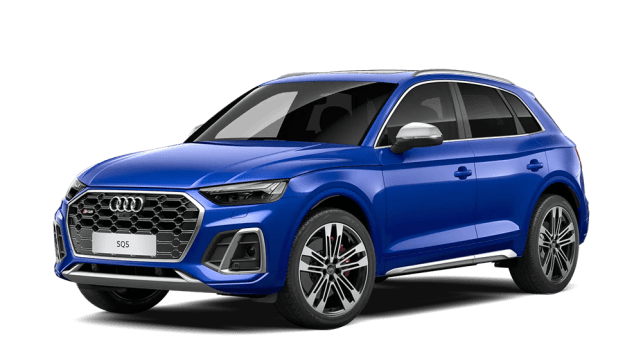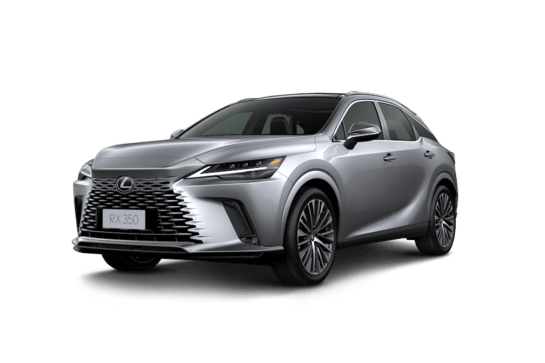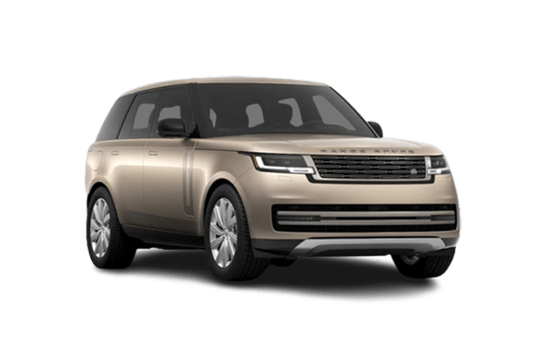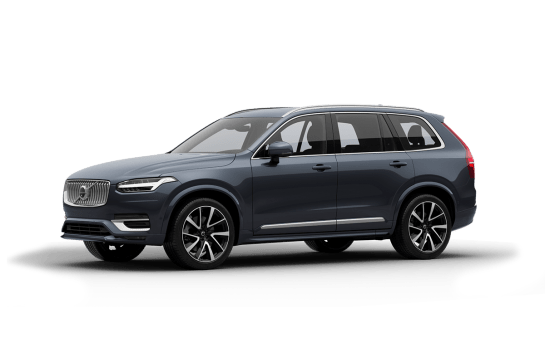
Mercedes-Benz G-Class VS Porsche Cayenne
Mercedes-Benz G-Class
Likes
- Loud
- Fast
- Good ride and handling finally
Dislikes
- Not as roomy as you'd think
- Smallish cargo capacity
- Pricey
Porsche Cayenne
Likes
- Colossal power and torque
- Comfortable and easy to drive family SUV
- Practical and spacious
Dislikes
- Four-seater only
- Gear shifter position
- Short warranty
Summary
Mercedes-Benz G-Class
Just like smoking, base jumping and shooting rounds off in a firing range the Mercedes-AMG G63 really shouldn’t be allowed… but dammit it’s fun. Super capable over tough terrain and a bullet on the road this top-ranking G-Wagon is the rock star of the AMG line-up.
Now, you may think this new-generation G63 looks just like the old one, but it’s completely new and fun and expensive and ridiculous.
We piloted the G63 for the first time on Australian roads at its launch. So, what’s this tall, imposing SUV like to drive? Is the cabin as spacious as it may appear from the outside? And yes, it’s fast in a straight line, but what happens when you get to a corner?
| Safety rating | |
|---|---|
| Engine Type | 4.0L turbo |
| Fuel Type | Premium Unleaded Petrol |
| Fuel Efficiency | 13.1L/100km |
| Seating | 5 seats |
Porsche Cayenne
The Porsche Cayenne Turbo GT needs a better name. This is the king of Cayennes and quite possibly the ruler of all super SUVs.
Well, the Cayenne Turbo GT is the fastest SUV around the Nurburgring Nordschleife. Not just that, it has such colossal power and torque it'll be side-by-side with a Porsche 911 GT3 RS in a sprint from 0-100km/h. No, a better name for this SUV would be the Cayenne GT3.
Which is perfect for me because I'm at the point in my life where although I love full-on and noisy cars I also have a full-on and noisy family.
Read more about
- "Who would have thought Porsche would go electric?" Porsche boss hails Taycan's "overwhelming success"
- Porsche doesn't need support from Volkswagen or other sports car brands on eFuels - but Lamborghini, Bentley and more could all benefit from it in the end
- When is the new Porsche Cayenne electric car coming? Timing confirmed for new BMW iX, Kia EV6 rival, and more details on new larger electric SUV revealed!
We lived with the Cayenne Turbo GT for a week to find out if this super SUV was also a super family car - from practicality to safety.
We're also a family with ridiculously high expectations of luxury SUVs having lived with and tested each of the Cayenne Turbo GT's rivals - from the Lamborghini Urus and Bentley Bentayga to the Aston Martin DBX and Alfa Romeo Stelvio Quadrifoglio.
| Safety rating | — |
|---|---|
| Engine Type | 4.0L turbo |
| Fuel Type | — |
| Fuel Efficiency | 12.5L/100km |
| Seating | 5 seats |
Verdict
Mercedes-Benz G-Class8.3/10
The Mercedes-AMG G63 shouldn't exist, but I'm glad it does. The previous generation was loud and fast, but had its flaws with poor ride and handling. This new gen G63 now rides comfortably and handles like a hero, while staying fast, loud and fun.
Is the G63 the ultimate SUV? Tell us what you think in the comments below.
Porsche Cayenne8.1/10
Of all the super SUVs I've piloted, the Porsche Cayenne Turbo GT is the best all-rounder in terms of performance, comfort, cabin technology and style.
As a family car it's roomy, practical and easy to use and drive daily.
As a performance car the Turbo GT is stupidly quick, with the agility of a sports car. Sure, a 911 would leave it behind on a twisty race track, but this SUV is close to having that sportscar experience and keeping your family, as well.
Design
Mercedes-Benz G-Class9/10
You know something looks interesting when people can't agree on whether it’s attractive or not. The CarsGuide office is divided on the new G63’s appearance with most saying it’s hot, but with a couple violently opposed to its looks.
Not that the new G63 looks different from the previous model, but that’s intentional. Mercedes-AMG knew the boxy personnel carrier-like shape was a massive part of this SUV’s appeal. The look has barely changed in 40 years. You could go back to the year 1979, push somebody into a time machine and when they fell out in the present day the first thing they’d say is: “Oh look, a G-Class”.
Despite the appearance that nothing has changed, almost everything has. The new G63 is longer, wider and taller than before at 4873mm end-to-end, 1984mm across, and 1966mm in height.
I’m 191cm tall and there aren’t many cars that I can’t stand beside and see over. Fortunately, if I even needed to wash the roof, I could hand off the side steps, which come standard and are as functional as they are good looking.
Also coming standard are the LED running lights which ring the outside of the headlight like a futuristic lining on an old-school design, so too are the LED tail-lights. The 'Panamericana' grille with its hat-tip to racing Benzes from the 1950s is also new part of standard kit. So is the tough looking side exhaust with two pipes poking out under the pronounced running boards on either side.
Our test car was fitted with the 'Night Package' which darkens the brake lights and adds the black treatment to the spare wheel cover, the bumper and mirrors. The pack also swaps the standard 21-inch wheels for 22 AMG cross-spoke matt black rims.
The G63’s interior has also been completely overhauled and updated with a dash featuring two 12.3-inch screens, which almost look like one giant widescreen display for nav and instrument cluster. The 'Exclusive Interior Plus' package box had been ticked on our test car and that brings diamond quilted nappa leather upholstery (ours was red) everywhere.
While it’s a sumptuous, luxurious, decadent cabin it’s impossible to ignore how vertical and upright the structure of the interior is – the windscreen, the dashboard, the doors - and then you spot the giant grab hold handle mounted on the glove box and you’re reminded that you’re actually in a hardcore off-roader.
The G63 is built on a ladder-frame chassis. Again, intentional. Yes, it’s the same as the Flintstones used in their car, but it adds immense rigidity, making it a mountain-eating monster on tough terrain.
Porsche Cayenne
This might be a personal thing but to me nearly all Porsches look better from the back than the front.
It's the wide stance and powerful haunches, the hunkered down suction-capped-to-the-road look that does it for me and the Cayenne Turbo GT, despite being an SUV, passes this important Porsche checklist item.
The GT aero kit only serves to make this SUV look more of a beast, and the gold-bronze looking satin Neodyne wheels are a Porsche theme that I've not always been a fan of, but I get the historic connection.
If only the Turbo GT could look a little less like other Cayennes from the front. This is the king of the SUV range and despite the apron and bumper already being exclusive to this model, there should be more.
Vents in the wheel arches, carbon bonnet with nostrils GT3-style perhaps? Or is that going too far? If you do want something more lairy then there's always the Urus.
The Cayenne Turbo GT's cabin is stunning in its plushness and modern surprises such as the passenger display, the hoodless instrument digital cluster, the lashings of Race-Tex upholstery everywhere. It's perfectly Porsche. High-performance meets high-end.
It's also highly practical. Let's talk about that.
Practicality
Mercedes-Benz G-Class7/10
The G63 may not be as spacious as you think it is. While the ceiling is high, legroom can feel a bit restricted in the front and the back.
Riding shotgun I needed to have my front seat brought back almost to its limit so my legs didn’t feel cramped in the footwell. And while, at 191cm tall, I can sit behind my driving position with room to spare – it’s really thanks to the carved-out driver’s seat back.
Cargo capacity is far from enormous at 454 litres, but that boot space is more usable than most SUVs because of the square dimensions.
There’s a 12-volt power outlet in the front, second row and cargo area, while there are two USB ports in the centre console bin and a charging USB port in the second row.
That centre console bin is enormous and the rest of the storage places are great through the cabin with large door pockets and cupholders in the front and second rows.
Porsche Cayenne
The Porsche Cayenne Turbo GT only makes one compromise on practicality and that's the removal of the middle seat in the back, which, with just two kids isn't used all the time but on average we might need it once a week for school mates and cousins.
Instead of a middle seat there is a shallow tray, which will fit a phone or in our case leaves and rocks found at the park.
So, yes, the Turbo GT is a four-seater only, but this is a spacious, large SUV with good head and legroom, wide-opening doors for easy entry and exit, and air suspension which can raise and lower the height for easy access.
Storage is excellent with enormous door pockets in the front and back and there are four cupholders.
There's a wireless phone charger in the front and two USB-C ports as well, plus two USB-C sockets in the back.
Four-zone climate control means the kids in the back can set their own temperatures. They also have heated seats.
I was disappointed to see there aren't sunshades for the rear windows - pretty vital in Australia where it feels like we're only about 50 metres away from the sun.
The Turbo GT's 576-litre boot just managed to fit our pram and a week's shopping, which is our minimum standard for living. Any more space is a bonus.
Price and features
Mercedes-Benz G-Class8/10
The new G63 lists for $247,700, before on road costs, which is about $12K more than the previous model, but you’re gaining a completely new SUV with improvements in the form of two 12.3-inch screens for your instrument cluster and media, there’s the Burmester 590w 15-speaker stereo, automatic parking, AMG sports exhaust, proximity key, nappa leather interior, sat nav, TV tuner, Apple CarPlay and Android Auto, three-zone climate control, heated front seats and 21-inch alloy wheels.
The Edition 1 G63 will costs you another $19,500 on top of the list price but includes the 'Night Package' which brings the black elements along with the 'Exclusive Interior Plus' package and an interior which adds carbon-fibre trim.
Porsche Cayenne
The Turbo GT is the king of Cayennes, so it shouldn't surprise anybody that it's also the most expensive with its list price of $364,700.
Lamborghini's Urus lists for $409,744 and is the Cayenne Turbo GT's not-so-subtle Italian cousin, sharing the same platform and engine.
Both are in my mind the best performance SUVs on the planet. It just depends how conspicuous you want to be.
Then there's Bentley's V8 Bentayga which isn't blessed with the Porsche's good looks but would still be all over the Cayenne if the two happened to meet at a race track.
So, why is the GT Turbo the king of the Cayennes? What makes it better? For all the reasons you'd think - it's the fastest, most powerful, most luxurious and most equipped Cayenne in the range.
We'll get into mind-bending engine and performance specs soon, but first let me take you through the standard features on a car that's anything but standard.
Coming standard and exclusively to the Turbo GT are 22-inch 'GT Design' wheels in satin 'Neodyne' with full-colour Porsche centre caps, an active rear spoiler, Turbo GT front apron, dual titanium exhaust, rear apron with diffuser, 'SportDesign' side skirts, wheel arch extensions, a lightweight carbon roof and tinted LED HD-matrix headlights.
Inside, and also exclusive to this grade, is the 'GT Interior Package' with 'Race-Tex' upholstery throughout with 'Deep Sea Blue' stitching on the front seats and centre console and the armrests and dashboard.
There's also the 'Carbon Interior Package' which includes dashboard and door trim elements.
Race-Tex trim is applied to the 'GT Sports' steering wheel, roof lining and gearshift, too.
The adaptive active air suspension, which can lower the car by 15mm, is standard and only available on the Turbo GT, too.
The soft-close doors are standard (a cost option on lower grades), as are the stainless steel pedal covers.
The rest of the features are also found on lower grades and include the 12.65-inch digital instrument cluster, head-up display, proximity unlocking, 12.3-inch multimedia touchscreen with sat nav, wireless Apple CarPlay and Android Auto, digital radio, a 10-speaker Bose sound system, heated front seats, rear privacy glass and an auto tailgate.
Four-zone climate control is standard on the GT Turbo, too, and so are heated rear seats.
Our car had several options fitted such as the front passenger display ($2860) and the Deep Sea Blue Accent Package.
The passenger display is a crowd pleaser, but as a family car my kids felt like they were missing screens in the back seats, too. Well, in my day...
Under the bonnet
Mercedes-Benz G-Class10/10
New engine, more grunt. Gone is the old 5.5-litre V8 turbo and in is the new twin-turbo 4.0-litre V8 (the same engine used in the Mercedes-AMG GT) with stacks more torque and the same power, at a whopping 430kW and colossal 850Nm.
How fast is the new G63? First, can I point out it weighs 2.5 tonnes, so take that into consideration. Second, it can nail 0-100km/h in 4.5 seconds. That is incredible.
Shifting gears seamlessly is a nine-speed automatic transmission.
The G63 is four-wheel drive and has three 100 per cent differential locks and low-range gearing.
Porsche Cayenne
As a middle-aged parent with two children, a Porsche that I don't have to crawl into and out of like a cubby house is a great thing.
What's even better is that this ‘easy access' Porsche is every bit as brutally powerful and fast as the quintessentially ‘pure' Porsche, the 911. Actually, it's more powerful and faster.
The Turbo GT's twin-turbo 4.0-litre V8 petrol engine makes 485kW and 850Nm with drive going through an eight-speed transmission to all four wheels.
In comparison, a Porsche 911 GT3 RS, arguably the most brutal and anti-social 911, has 386kW/485Nm.
I haven't made a mistake. Those are the real numbers. And it's only when you step on the accelerator in the Cayenne Turbo GT, and it feels like somebody's sat down on your chest, that you realise what a big deal this is.
That is such a colossal amount of oomph that this 2.2-tonne family SUV can accelerate from 0-100km/h in 3.3 seconds.
The 911 GT3 RS can do it in 3.2 and it has a roll cage and a fixed rear wing the size of a bedroom door.
And yes, we're now coming into a digital age where Teslas and other electric SUVs are quick, too, but can they go around corners like a Porsche Cayenne Turbo GT?
Do they have the same rumble and roar as a twin-turbo V8 that's terrifying and enticing at the same time.
The correct answer is, absolutely not.
Efficiency
Mercedes-Benz G-Class7/10
Oh, come on, you don’t want to know this… skip to the next section.
You’re still here. Okay then, it’s 13.1L/100km over a combination of urban and open roads. That’s under ideal conditions, too. Our car was going through premium unleaded at about 16.0L/100km. Good thing is you have a 100-litre fuel tank.
Porsche Cayenne
Seriously? This is a 2.0-tonne twin-turbo petrol V8 with a 90-litre fuel tank. Even the Porsche specs sheet doesn't understand the question because in the column for fuel efficiency there are three letters - tbc.
My own testing saw me record 22.5 L/100km at the fuel pump, which means I enjoyed driving the car very much.
A little digging around reveals Porsche globally claims the Turbo GT will use 12.6L/100km, over a combination of open and urban roads.
You might not have as much fun as I did but easing back a little might get you closer to the 700km of range this more frugal consumption figure appears to offer.
While efficient it isn't, I'm not going to mark the Turbo GT too much here because compared to its petrol rivals the fuel consumption is what I'd expect from such a high-output heavy SUV.
Driving
Mercedes-Benz G-Class9/10
Have you ever driven a G-Class before? Nope, well then have you ever ridden an elephant, then? Passed time hanging out on the roof of your house just drinking beer? Sat on somebody shoulder’s in a game of swimming pool volleyball?
Okay, well you feel very high up and the bonnet stretches out before you like the hood of Mack truck, and that’s when you realise those weird-looking indicators on the guards double as signposts letting you know where the edges are.
But even then, it doesn’t feel big to drive, even the cabin feels a bit tight up front.
What it does feel is fast. Very fast. Dab the accelerator and the nose rises up and you better be pointing in the direction you want to go, because hold the pedal down and the G63 will yank you down the road at warp speed.
Acceleration isn’t supercar brutal by any means, but how it gets there is roaring through that side exhaust like a Viking running into battle, after waking up on the wrong side of the bed. With the windows down its deafening, but in good way.
Complaints about the old G63 centred around steering, ride and handling or more specifically the absence of those three things. In this new generation G63 those pain points have been addressed by replacing articulating ball steering with electric power steer, swapping the live front axle for independent front suspension and revising the chassis rails.
Now, the G63 can go around corners – incredibly well. Our test track was Victoria's Great Ocean Road, and if we were in any other large SUV, they would have been fishing us out of Bass Strait.
Steering is now accurate and progressive; the front end feels pointable and light.
Comfort drive mode is too comfortable for me, giving the ride a wafty bounce. Sport mode firms the dampers for good handling but keeps the ride comfortable, which adding weight to the steering. Sport Plus firms the adaptive dampers further and combines great cornering without an unbearable ride.
The G63 isn’t a vicious animal unlike some big grunt sports cars, but you have to keep reminding yourself you can’t drive it like one. Not because it will bite you, but because it’s 2.0-metre tall, 2.5-tonne metal box. A hilariously fun one.
Porsche Cayenne
Never have I met a car this powerful and superbly athletic that is as pleasurable to drive alone on great, fast roads as it is to pilot at 50km/h in the suburbs with a family on board.
It exceeds my understanding of engineering that something this large can move so quickly. That in an instant can turn and tip into a corner with such precision and effortlessness.
Yet it can switch seamlessly and happily to coping with speed bumps and potholes, delivering a ride so comfortable it'll send babies off to sleep. And it did.
The only issue, and this is such a tiny thing, is the dash-mounted gearshift, which means having to reach up and select Drive or Reverse or Park, which, when executing a three-point turn, is necessarily frustrating.
Still, I'm giving the Turbo GT a 10 out of 10 for driving under all conditions, and we didn't even go off-road, which of course you can do, as long as it's not too wild.
Safety
Mercedes-Benz G-Class9/10
The G63 has the maximum five-star ANCAP rating and along with nine airbags comes with AEB, lane keeping assistance, blind spot warning, traffic sign recognition and adaptive cruise control.
For child seats you’ll find three top tether points and two ISOFIX mounts across the second row.
Obviously, there’s a full-sized spare wheel. Don’t make me point it out.
Porsche Cayenne
The Porsche Cayenne Turbo GT hasn't been locally crash tested and so doesn't have an ANCAP rating.
That's quite normal for super high-end cars. But, when this third-generation model first arrived in 2017 it was tested by ANCAP's European equivalent, Euro NCAP, and was awarded the maximum five stars.
There's AEB which operates at city, urban and highway speeds, and lane keeping assistance, and lane change assistance which is a form of blind-spot warning, and adaptive cruise control. You can option rear cross-traffic alert, as well.
A space saver spare wheel is under the boot floor.
Ownership
Mercedes-Benz G-Class7/10
The G63 is covered by Mercedes-Benz’s three-year/unlimited kilometre warranty. The pricing plan for servicing will cost you about $4000 over three years.
Porsche Cayenne
The Cayenne Turbo GT is covered by Porsche's three-year, unlimited kilometre warranty, which is lagging behind in terms of duration even compared to other luxury brands such as Mercedes-Benz, which offers five years.
Servicing is recommended annually or every 15,000km, although there isn't a capped price maintenance plan with final costs determined at the dealer level (in line with variable labour rates by state or territory).
































